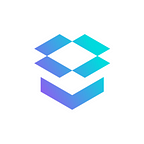A social system describes living organisms’ interaction with one another as well as their collective co-existence, regardless of whether the interaction is voluntary or involuntary, and regardless of whether the living organisms are aware that they are involved or not.
Ultimately, social media allows individuals to communicate with friends and family members. Some people use various social media applications to network and find job opportunities, connect with people around the world with similar interests, and write about their own experiences, thoughts, feelings, and insights.
Social Media is now playing a crucial role in NFTs. We call NFTs on social marketplaces a social NFT. The creative and gaming industries are becoming increasingly reliant on those NFTs.
In particular, they are beloved by entrants into the crypto world and by those who already understand how cryptocurrencies work, like Bitcoin and Ethereum. Modern-day artists have found entire new audiences for digital art.
A non-fungible token is a kind of unique digital asset that is managed on the blockchain for its ownership. Although most NFTs are digital assets, it is also possible to use them to track physical assets as well.
Examples of NFTs include digital artworks, virtual items in videogames, and unique items in collectibles. A unique feature of an NFT is that there can be multiple copies of it, and each needs to be distinguishable somehow.
However, there are now multiple blockchain standards that people who want to mine (create) NFTs can use. The original NFTs were governed by the Ethereum network (which competed with Bitcoins), many new NFT projects and collections are governed on the Binance Smart Chain.
An NFT is just a digital representation of something unique that can be proved to be genuine through a smart contract platform.
NFTs as Social Tokens
Many people receive NFTs in a variety of ways, mostly as part of a community. Quite a few are issued by creators as rewards to their supporters, such as early adopters of their products. The uniqueness of each NFT is proved by its supporting blockchain.
Digital goods have become more affordable thanks to non-fungible tokens (NFTs). By being a part of the investment in deflation, companies have been creating non-fungible tokens, which can be viewed as provable ownership rights for scare digital art.
In a world where art galleries around the globe are closing due to COVID-19, and more cultural experiences take place online, Ethereum has found a niche where a community of collectors can interact with artists amongst themselves.
How do NFTs Work?
It is best to think of blockchains as a sort of database where data is physically chained together in groups (blocks). Each block has a limited capacity, and when it runs out, data is moved to another block, chained to the original.
Each chained block creates a permanent history, so that each time an NFT is sold, ownership details are part of a new chain, ensuring that its history persists and its ownership is protected.
Media Links:
Website: https://socialnft.market/
Twitter: https://twitter.com/NftSocial?s=20
Instagram: https://www.instagram.com/social.nft.marketplace/
Telegram ANN: https://t.me/SocialNFTAnnoucements
Telegram Chat: https://t.me/SocialNFT
Youtube: https://www.youtube.com/channel/UCAAV_8YwHqTqQgmK3z5jmcw
